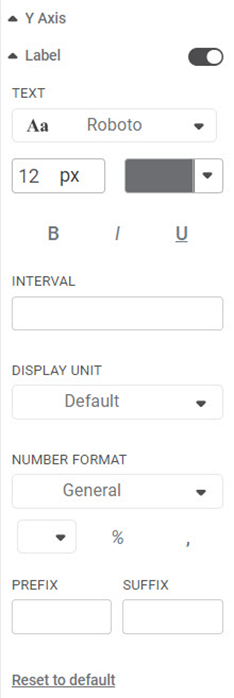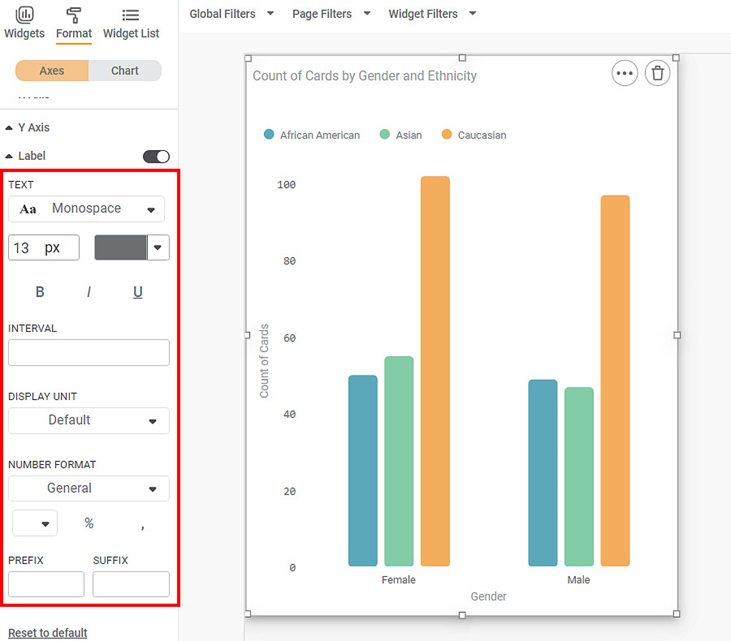Axis Label is the parameter that represents the variable plotted on the Y-axis.
The table given below describes different fields present on Axis Label formatting in Y-axis.
Field | Description | Remark |
|---|---|---|
Text | It allows you to modify the parameters of the Axis Label. |
|
Interval | It allows you to select the interval between two consecutive coordinate values of the variable plotted on the Y-axis. | For example, for plotting the weight variable, if you select the interval as two (2), then it is plotted as 0, 2, 4, 6, 8, and so on. |
Display Unit | It allows you to select the multiples of the unit in which the variable on the Y-axis is measured. | You can select any of the following units
Default indicates that the unit is assigned automatically by parsing the range of the data. That is, Thousands/Millions/Billions/Trillions is automatically assigned based on the data. None represents that no unit is set for the variable. |
To use Axis Label formatting options, first plot a Column Chart using the dimensions and measures from the dataset. For example, we plot a Column Chart of the Count of Cards against Gender. The Ethnicity of the sample is the Legend dimension.
The figure given below shows an original image of the Column Chart. By default,
- The axis label is the set of values plotted on the axis. They are auto-selected from the dataset and are equidistant. In the chart below, the axis labels are 0, 20, 40, 60……, and so on.
- The font type is Monospace, the font size is 13, and the default color is used.
- The interval between data labels is auto-selected to accommodate all the data points. In the chart below, the interval is 20.
- The display unit is the same as that in the dataset.
Now,
- Change the axis label font type, font size, and font color.
- Make the axis label bold, italic, and underline it.
- Change the interval of the data labels. Here in the chart below, we select an interval of 15.
- Change the display unit. In the chart below, we select the display unit as 'Thousand'. The original data values remain the same, however, now they are converted in terms of thousand. For example, a value of 50 will become 0.05K.
The resultant widget is shown below.


